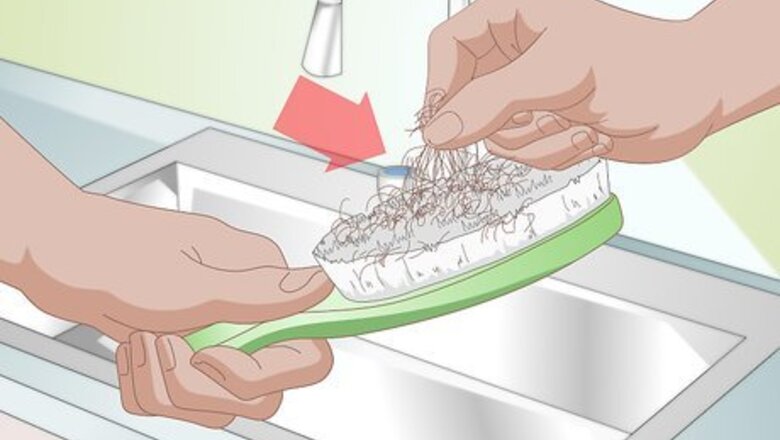
views
X
Trustworthy Source
Animal Humane Society
Leading animal welfare nonprofit organization providing medical care, training education, and resources for animal owners
Go to source
In order to avoid redistributing the same dander, dirt, and hair, though, you need clean your brushes, combs, and other cleaning implements regularly. To do so, you can use a variety of household products to create a cleaning solution and take some basic hygienic measures to maintain the quality of your instruments.
Soaking Your Instruments
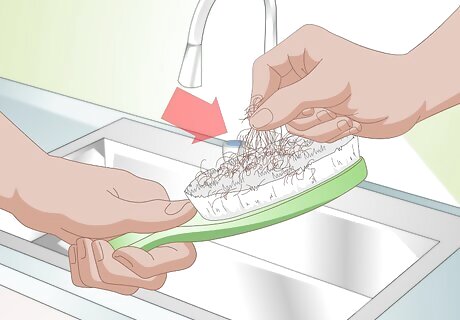
Remove all fur from the brush or comb. Before preparing your cleaning solution, pick out visible hairs and dirt from the brush’s pad and bristles. You can do this with your thumb and forefinger, or with an old toothbrush or comb. Don’t worry if you can’t dig out every last speck of visible dirt or dander. The soak will loosen up and extract most things, so just aim to remove the most glaring clumps of hair and buildup.
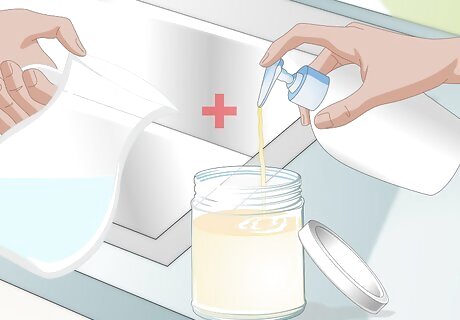
Prepare a solution of water and vinegar or shampoo. Depending on your preference, you can add vinegar or pet shampoo to a large mixing bowl of warm water. A vinegar-based solution should contain equal parts vinegar—either white or apple cider varieties will do—and water. If you're using shampoo, you only need to add two or three generous squirts to a bowl full of water. When choosing a pet shampoo, check the label in order to avoid harmful ingredients such as carcinogens, tar, propylene glycol, or perfumes. If possible, opt for an organic shampoo with few ingredients.
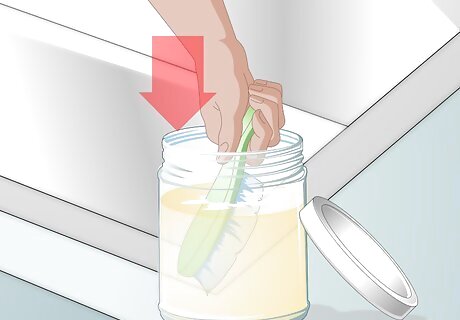
Dip the brush bristles or comb teeth into the solution. Once you’ve removed excess hair and dirt, you should submerge your grooming instruments in the cleaning solution for between five and thirty minutes. This step is important even if you’re planning to disinfect with bleach or an antibacterial spray. After all, most disinfectants—including bleach—don’t remove dirt or grime, so you can’t just substitute one for the other. Pet brushes and combs are generally made of plastic, but if you own one with a fabric pad, don’t soak the entire head of the brush. If you do, moisture can accumulate in the fabric and eventually cause mold.
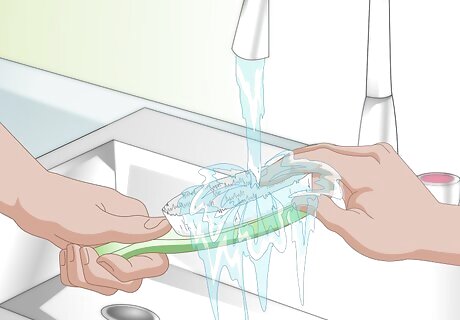
Rinse with clean water. After soaking, your brush or comb will still have some residual dirt or hairs clinging to the bristles or pad. You can remove this remaining buildup by rinsing it in clean water and then lightly shaking it to whisk off any excess moisture. You can also dip your brushes in another bowl of clean, pure water if you don’t want to rinse them in the sink.
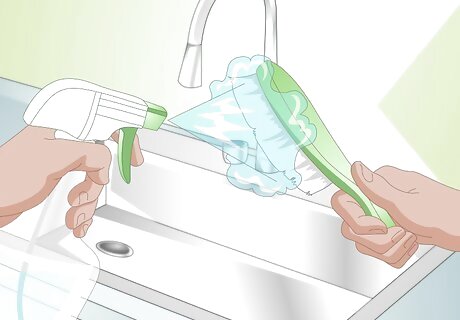
Spray a disinfectant onto the clean brush. While vinegar and shampoos have some antibacterial properties, you should apply a separate, stronger disinfectant if you’re worried about germs, viruses, or other bacteria. You can buy aerosol, enzymatic, or essential oil disinfecting sprays from the store, or you can make your own solution with water and 10% bleach. If you have a lot of tools to clean, you might want to consider purchasing an ultraviolet light. Since UV light kills bacteria, you can lay all of your implements under the light to dry rather spraying each one individually.
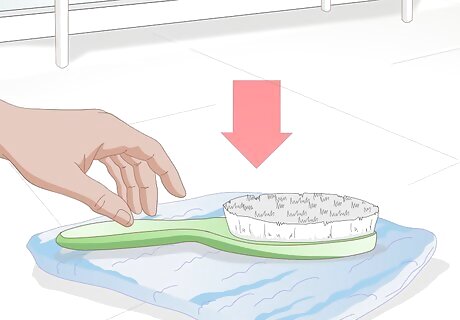
Place the brush on a towel to dry. Rather than using your newly cleaned and disinfected brushes immediately, set them out to dry thoroughly before subsequent use. Place them with the bristle side facing downward so that water doesn’t drain into the handle or brush head. You can also use an old dish rack if you don’t have the counter- or floor-space for laying out your grooming tools. Just be sure to arrange them in such a way that the moisture drains out of the brush and not into the handle or head.
Storing and Maintaining Your Tools
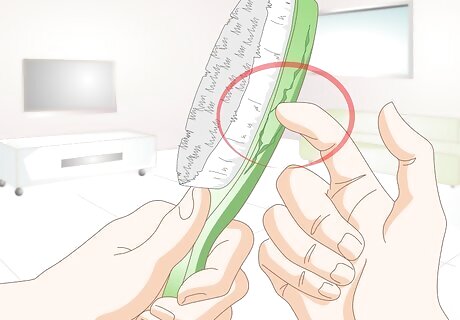
Inspect brushes and combs for signs of wear. Even the most diligently cleaned brush or comb will eventually show signs of wear and tear. Visible signs of deterioration mean that you should replace the brush or comb, so check your tools frequently to make sure they’re holding up well. Cracks, broken bristles, or extracted teeth are all indicators that your brush or comb has reached the end of the road.
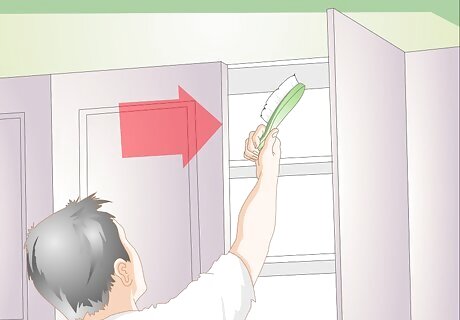
Store tools in a dry, warm space. You probably know that you should keep brushes and combs away from chewing, playing animals, but keeping them out of reach from your pets isn’t the only criterion for safe storage. Your grooming tools also need a warm, dry area to reside in between use, as cold temperatures keep germs alive longer, and moist conditions promote the growth of mold. If you live in a particularly humid climate, you might want to purchase a dehumidifier to keep your brushes dry. Just be aware that dehumidifiers can corrode a rubber pad, so opt for hard plastic brushes if you’re going to use one.

Repeat brush cleanings weekly. Since your brush gathers new dirt, hair, and germs every time you brush your pet, you should wash your brushes frequently. Some owners prefer to do so after every use, while others prefer a weekly or even biweekly schedule. Whatever schedule you decide on, be aware that you’ll need to clean your brushes more frequently any time your pet is experiencing a skin irritation, pest problem, or other virus.


















Comments
0 comment